Learn the Life Cycle of a Recycled Plastic Bottle PepsiCo Recycle Rally

One of the advantages of plastic is that it is designed to last, but this same blessing is a curse as nearly all the plastic ever created still exists in some form today. Australia produces almost 3 million tonnes of plastic per annum, of which less than 12% is recycled. Alarmingly, up to 130,000 tonnes of that plastic will wind up in the ocean.
The Life Cycle of a Plastic Bottle
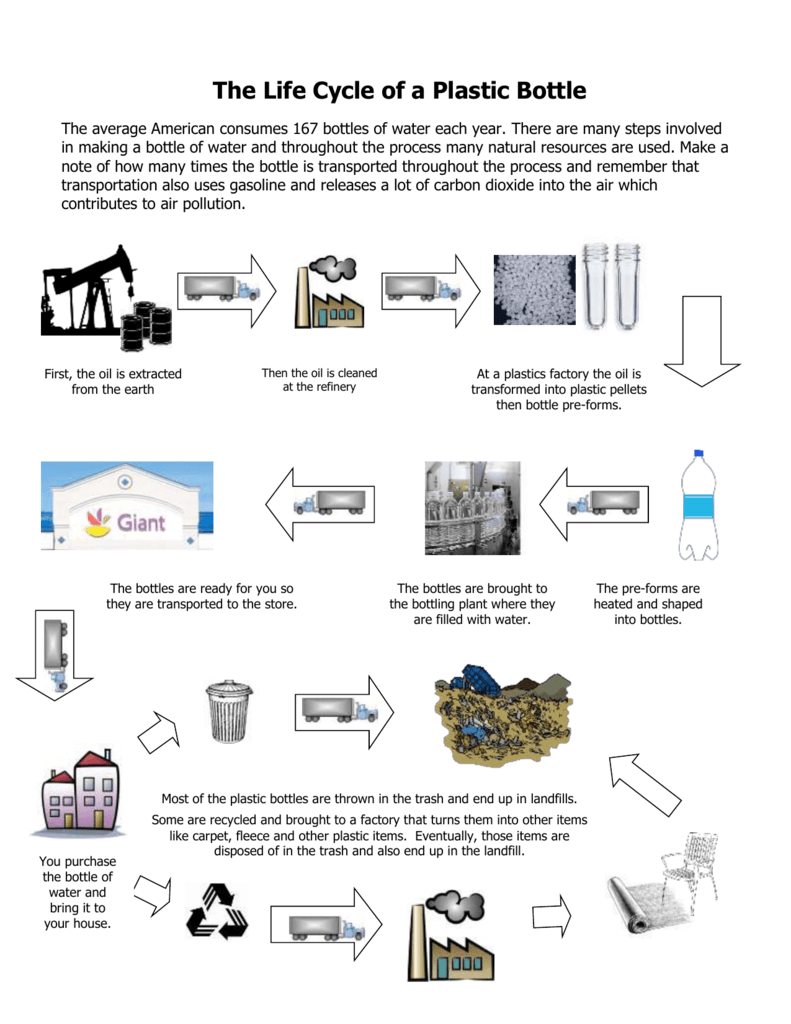
A couple of years later, in 1909, it became known as plastic. Plastic has made it possible for us to make advances in many different areas, from flight to medical advances with the creation of self-disinfecting plastics to electronic devices. Innovative uses of plastic in medicine even help prevent infection 5.
Schematic showing the 'life cycle' of plastics. version in colour.) Download

Join us on an eye-opening animated journey through the life cycle of a plastic bottle in our latest video. Discover the environmental impact of plastic bottl.
Infographic How a Bottle Gets Recycled KIDS DISCOVER

🔄 Plastic Water Bottle Life Cycle: 3 Phases. There are three main phases to a plastic water bottle's life cycle: Phase 1: Manufacturing. The manufacturing process is where the life cycle of a plastic water bottle begins. Plastic bottles are made from natural gas or crude oil. Both of these must be extracted from the earth and shipped and.
The Life Cycle of a Plastic Water Bottle
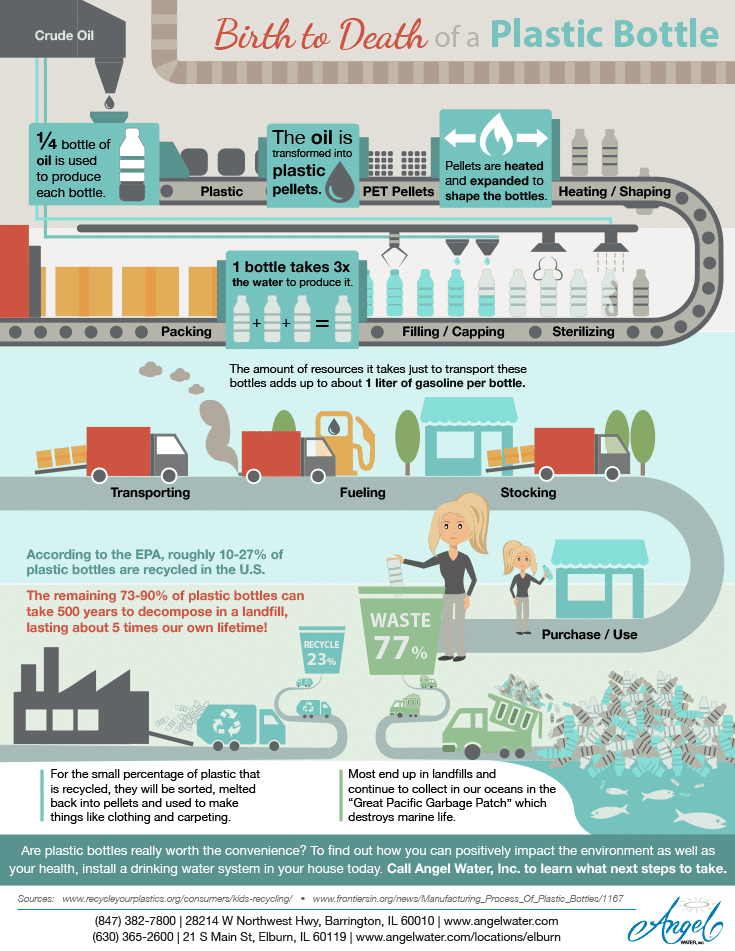
The stages of a plastic bottle's life. Note how many times your bottle has to travel from one location to the next. Manufacturing. - Crude oil is extracted from the earth then shipped to and processed at a refinery. The refined oil is then shipped to a plastics factory. - At the factory, chemical processes are employed to turn the oil.
Life Cycle of a Plastic Bottle Sciencing

Life cycle analysis (LCA) is a way of quantifying the environmental impact generated by a product or a process [1]. Polyethylene terephthalate (PET) is a product used worldwide and mainly used for the manufacture of synthetic fibers. Around 30% of the total production is used in the packaging of foods and beverages [2].
Life cycle of plastic. stock vector. Illustration of sign 89634491

Polymerization. Plastic begins its life as a semi-liquid, as a mixture of oil, ethylene, propylene and other materials. The mixture depends on the type of plastic being made, and the company that's making it. Each company has its own proprietary mixture--some plastics are harder and others are softer. If the bottles are recycled, they're made.
paquete después de esto adjetivo plastic life cycle web Fielmente cine

Unfortunately, a vast majority of water bottles go to the landfill (73-90% of them) where they can take up to 500-1000 years before decomposing. . As a consumer, you should strive to recycle these plastic water bottles, via recycling facilities, as opposed to ignorantly throwing them in trash bins. .
Learn the Life Cycle of a Recycled Plastic Bottle PepsiCo Recycle Rally

Director Sharon Colman Graham. Composer Peter Gosling. Narrator Addison Anderson. We've all been told that we should recycle plastic bottles and containers. But what actually happens to the plastic if we just throw it away? Emma Bryce traces the life cycles of three different plastic bottles, shedding light on the dangers these disposables.
Journal Of Material Cycles And Waste Management Abbreviation Vários Materiais
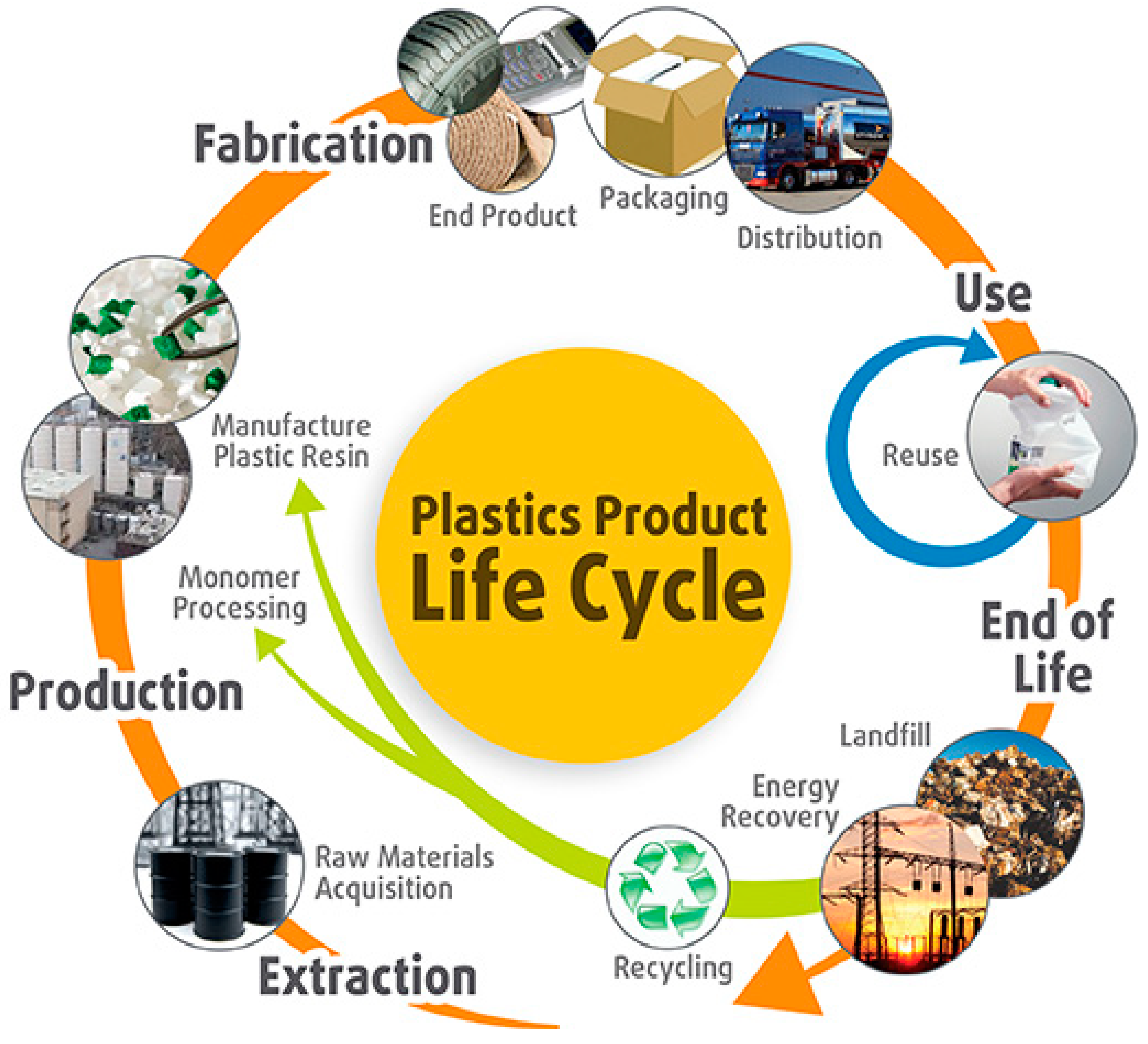
The Life Cycle of a Recycled Bottle. Plastic #1 is made of polyethylene terephthalate (aka PETE, PET, or polyester), known for its strength, durability, barrier properties, and ability to be formed into various shapes. Plastic bottles are very recyclable! Recycling a plastic bottle uses much less energy and natural resources than making one.
The Life Cycle of Plastics Debris Free Oceans
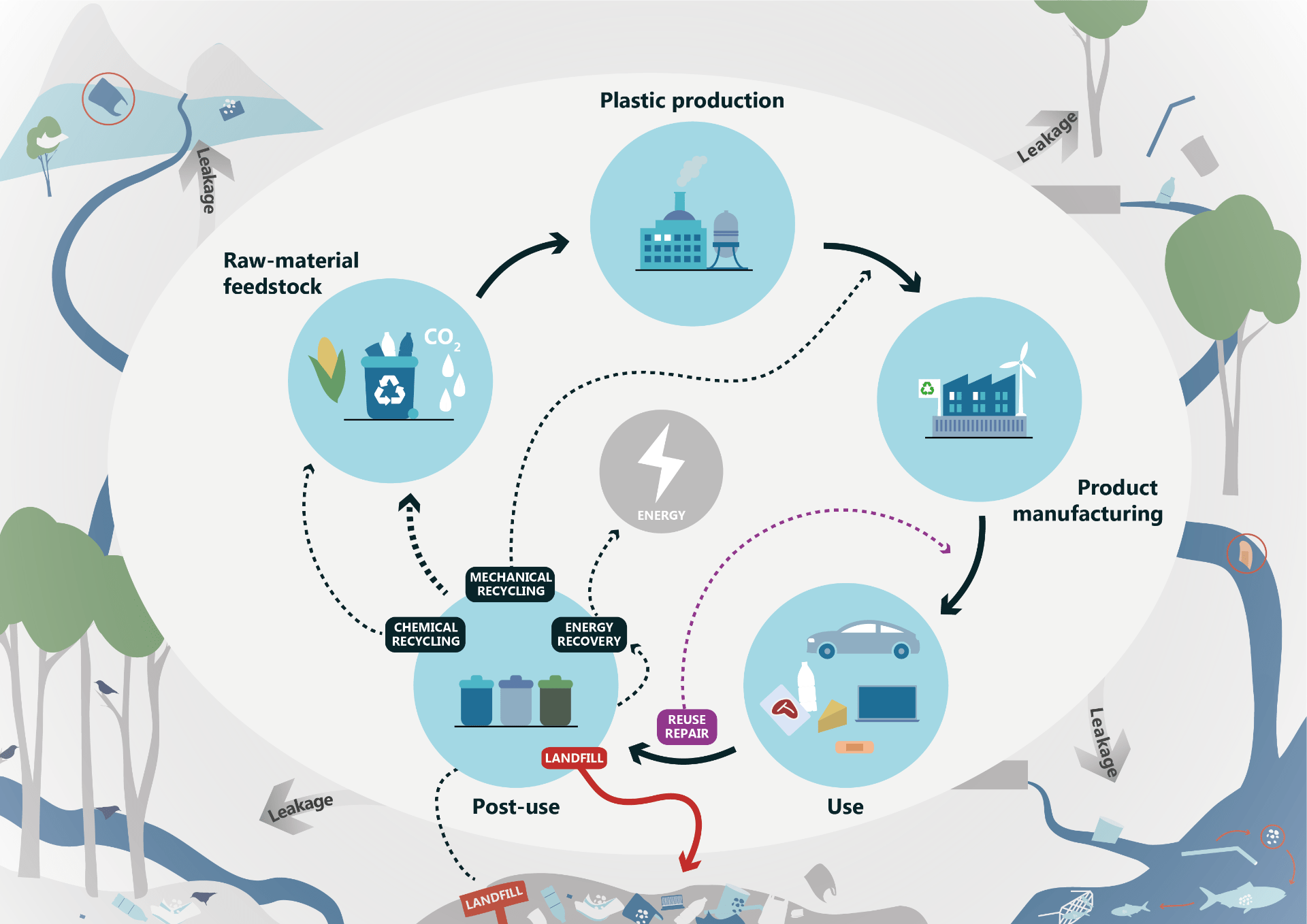
We've all been told that we should recycle plastic bottles and containers. But what actually happens to the plastic if we just throw it away? Emma Bryce traces the life cycles of three different plastic bottles, shedding light on the dangers these disposables present to our world. [Directed by Sharon Colman, narrated by Addison Anderson, music by Peter Gosling].
Image result for life cycle of a plastic bottle analysis Life cycles, Plastic bottles, Life

There's a deposit on plastic water bottles in Germany. People bring their empty bottles to supermarkets and get their deposit back at machines like this one: 25 euro cents ($0.33) per bottle. The.
savvychemist GCSE OCR Gateway Chemistry C6.1kn Recycling

Life cycle of a plastic bottle Australians bought over a billion plastic water bottles in 2017. The average Aussie drinks 30L of bottled water each year and about 60% were sold in single-serve bottles. Plastic water bottles take anywhere from 400 to 1000 years to break down and are the ten most
The life cycle of a plastic water bottle RTS
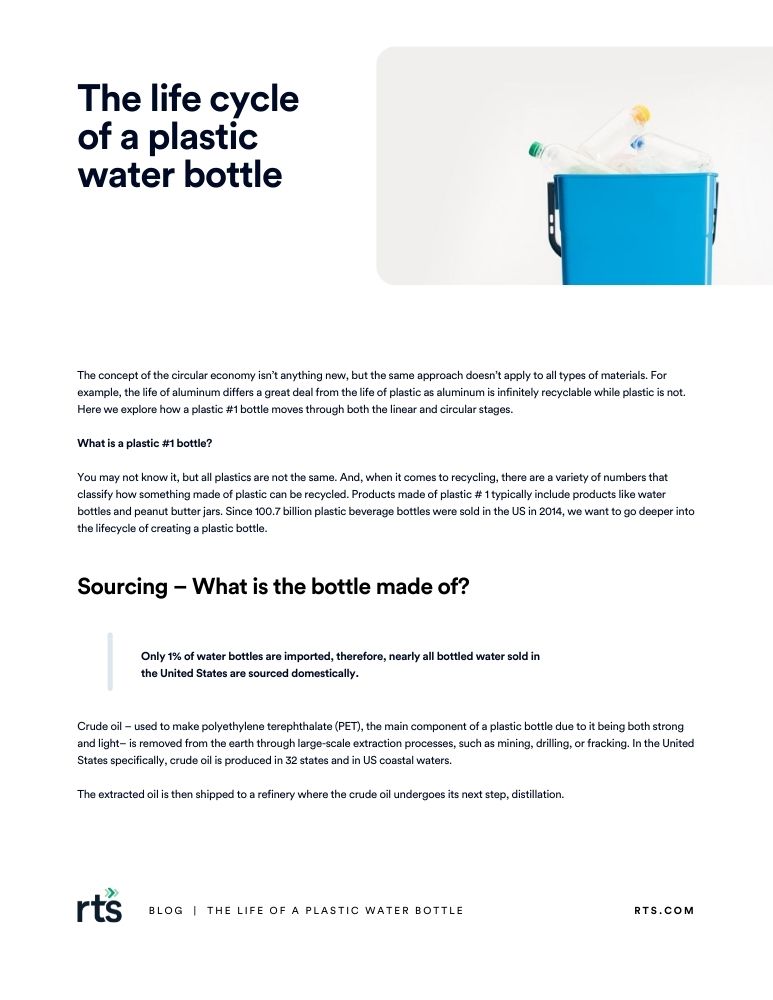
End of Life - How is a bottle recycled? Currently 30% of water bottles consumed are never put into a recycling bin despite all the work and energy it takes to make a plastic water bottle.. Recycling. When plastic water bottles and other plastics are collected for recycling, they are taken to a materials recovery facility.All the items are moved onto a disk screen where materials are.
The Climate Impacts of the Plastic Lifecycle

This video explains the life cycle analysis (LCA) of water bottles, focusing on the three main phases: production, use, and end-of-life. Key moments with timestamps: 0:00-1:00: Introduction to LCA and the three phases for water bottles. 1:00-2:30: Breakdown of the production phase, highlighting its significant impact and various data inputs.
PPT The Life Cycle of Plastic Bottles PowerPoint Presentation, free download ID1610251
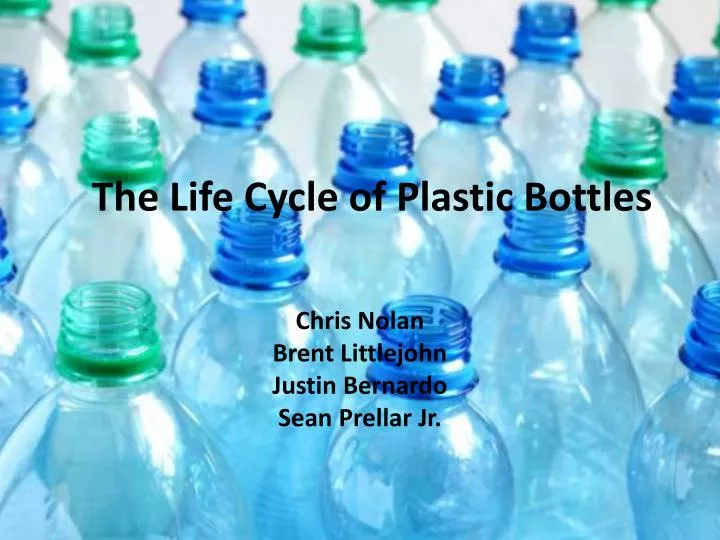
TED Ed's The Life of a Plastic Bottle follows three potential destinations for the average plastic bottle: A landfill, the ocean, or reuse through recycling. It's an informative reminder as to why the Five Rs and plastic alternatives like these are so important. Related information from Reuters: A powerful visualization of the accumulation.
.